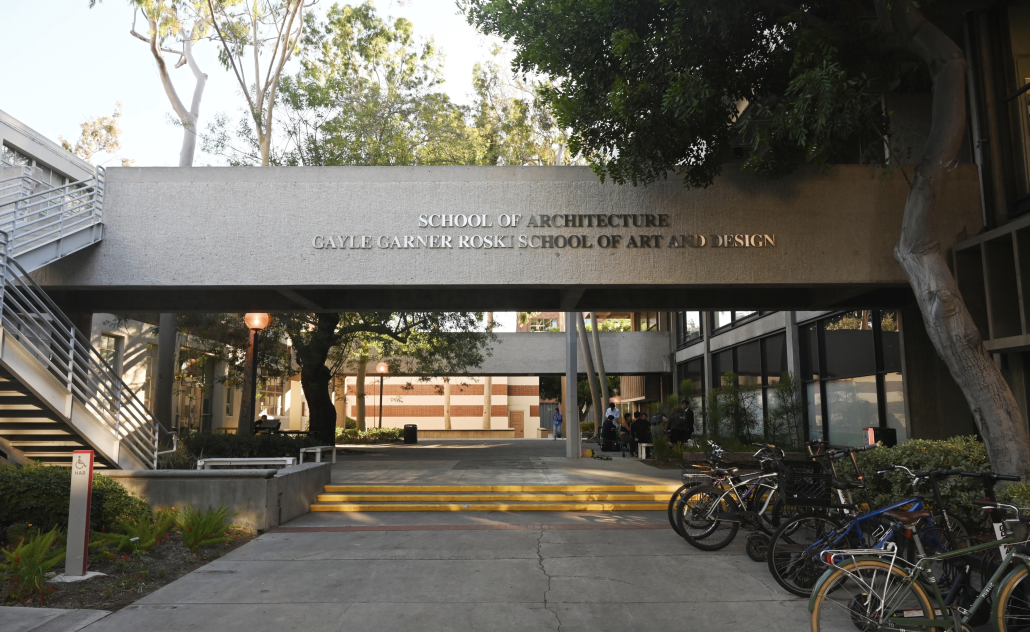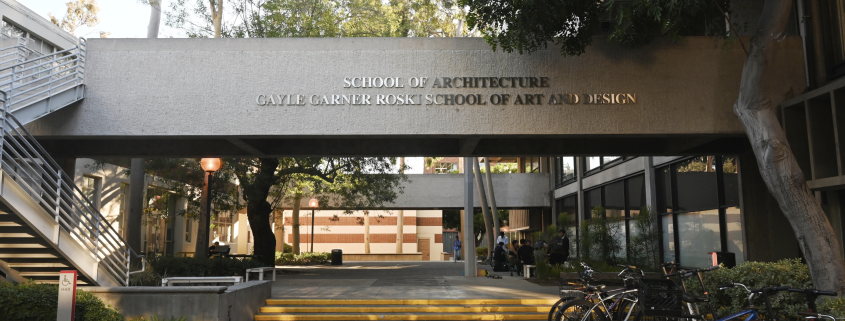The School of Architecture is problematic, unchanging

I think I might be in a toxic relationship. I’m on my knees begging for forgiveness after I failed to execute a request properly. Then I find myself searching for hours on end for a way to redeem myself, only to be told that I presented my offer of redemption too late. Schedules are edited at whim, and I am expected to drop everything just because I am supposed to be devoted. I question this relationship, and I do really want to fix it — to fix myself to serve it better.
Perhaps, my analogy is too obvious. I am, of course, talking about my major: architecture.
To most (the some 20,500 non-architecture majors), the field seems like a substantial amount of work. Your friends in the program likely declined that rager last weekend, citing their need to catch up on their latest project. Or perhaps you’ve never heard of the program. I wouldn’t blame you. After all, it doesn’t even have a donor’s name in front of it. Schools at USC tout their benefactors’ names like students do their astrology signs. Architecture sticks out of the roster like a sore, underfunded thumb.
But my issues with the School of Architecture, or SoA as these minimalist, self-proclaimed design geniuses call it, go beyond the lack of funding. Sure, I have to pay for materials, access to design tools and machines vital to the curriculum and arrange my own transportation to mandatory field trips — but we’re USC students, of course we have the funds for that. Tuition is a reasonable $65 thousand, what’s a few more thousand dollars? Honestly, I’m more surprised at the fact that they’ve managed to wring the fun out of field trips than I am infuriated by the costs.
What truly unhinges me, though, is the sheer lack of empathy ingrained within the program. Last semester, we met for four, four-hour blocks per week, with each meeting evaluating the work done in the last — adding more to be scrutinized in the future. It was a constant loop of labor; while I had Wednesdays off, I was never truly free — I was often spending 8-12 hours in the library in an attempt to catch up for Thursday. The department never provided accommodations, so if you missed a week due to illness (I did, twice) you were left to scramble to ensure that you finished the assignment by the review date, where the unforgiving jury would criticize you, saying that your project was unfinished. All energy was turned to serve the all-mighty deadline, as it confronted you unimpressed by your latest offering, only to kick you down and have you repeat the process in a manner that would make Sisyphus look on in horror.
The resulting culture is one indulged in masochism. Students would compete over how many all-nighters they put in or laugh about ending their lives over a project. The negativity was palpable, even suffocating. Conversations I had with friends in the program would devolve into trauma-laced negativity fests where we would exchange the latest horrors: One student was criticized in front of the class for not washing his hands when the professor saw fingerprints on his model. Two students managed 48 hours of consecutive work on one project. Another had to restart her anti-anxiety pills.
These kinds of conditions are unforgivable by any standard, however, they are often justified by the profession itself. In the workforce, unpaid overtime is almost expected, which is embittered by the fact that recent grads of SoA make around $48,000 and are expected to eventually earn $80,000. But, if you’re passionate about your work, then it isn’t truly work, right? It’s common practice within the field to have a side hustle, so become a YouTuber, or even a professor, and perpetuate the toxic work culture pervading the profession to a generation of malleable youth. To prepare students for the profession, they must be exposed to the worst of it.
However, these problems are actually entirely remediable. The curriculum is extremely flexible, and is completely reset every year. However, all that these resets appear to do for the program is allow professors to push curriculums that are just as demanding but have never been tried before. As a freshman, I was made to learn Grasshopper, a program typically taught to 4th and 5th years that is hardly ever used in practical settings. Don’t ask, I am just as dumbfounded as you are.
The problem is that professors are teaching what they know about the field: It’s intensive, soul-crushing and will take every last fiber of your being to survive. It’s all they know. I can’t really blame them for passing their trauma down to us because it’s what they’re being told to teach. And I think it might be working. I developed acute anxiety as a result of the first semester. So this time around, I have to brave a full-time job’s worth of hours punctuated by anxiety attacks that render me unable to actually do the work for my major, or any other class for that matter.
I wish I could end this piece saying that things are changing, that the school and the profession are responding to the humanitarian crisis pervading them. But I don’t think they are. I don’t know when they will or if they will. I want to create things that make people happy, that inspire joy, but producing them brings me pain. It hurts. And honestly, I don’t know how much longer I can carry on this relationship.
If architecture doesn’t care about me, then why should I care about it?

